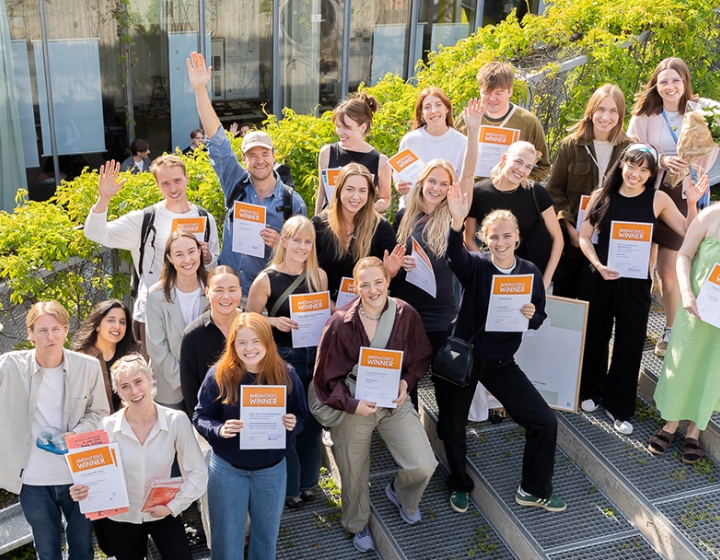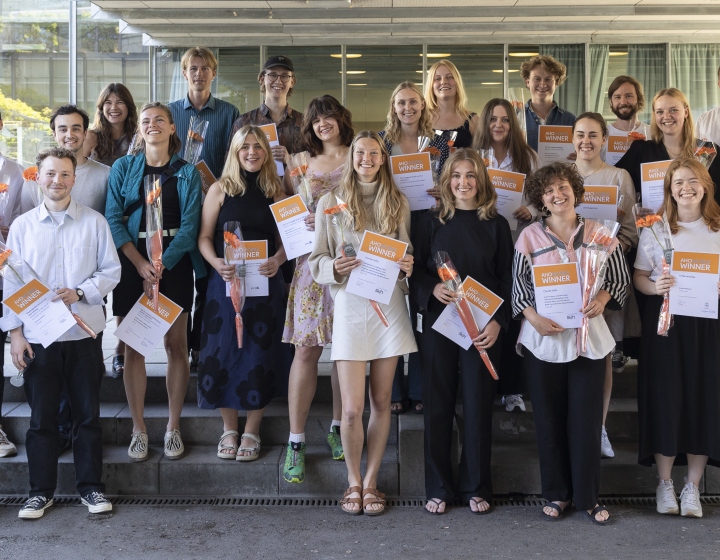Student chat: Eva Storrusten
We’ve talked to Eva Storrusten (25), currently a fourth year architect student.
What are you doing at AHO for the time being?
This semester I attend a course called “In Transit” which discusses the refugee situation in Europe and Norway. Right now there are a lot of people moving, both in Europe and the rest of the world, either it’s about global urbanism or internally displaced people. The course is focusing on the refugee crisis.
Right now there are two major refugee crises in the world. We know what happens in Syria, but there is also a crisis in Colombia where there are over 6 million refugees. The course handles how architects can aid displaced people in general, and we’re focusing on the European crisis.
Explain how the course was brought together.
We have four teachers. They’re young and have experience with humanitarian crises. Out in the field they’ve noticed a need for architects and planners in managing large groups of people in crises. When 4000 refugees arrives at a place overnight you don’t have the time to come up with smart solutions. The intention of the course is to develop strategies for design which can improve the situation for people in extreme difficulty.
Elaborate on the course.
Until now we’ve been given quick tasks and done research regarding different subjects. Recently a new brief was given, which is focusing on Greece. We are going to produce material: both drawings and models, to present in front of UNHCR (The United Nation High Commissioner for Refugees). We’re travelling to Greek islands that have received a large number of refugees. As preliminary work, the students have been working with different sites and issues on three different islands: Kos, Kalymnos and Leros.
What are you working on for the moment?
Our preliminary is about the site at the harbour at Kos, where both tourists and refugees arrives. The refugees need to wait to register. They might have to stay overnight, while many tourists are just visiting on their way to the hotels. Our task is to create a safe public space to wait and for activity. I find it interesting that the site is being used by people with different needs. They come on different premises, some are traumatized, others have lost their family, etc.
Some of the focus is to which degree the social meeting places can contribute to activity and give a sense of security, especially with regard to women and children. Refugee camps are often rationally designed and we discuss in which way aesthetic and practical design can contribute to people´s lives. As architecture students, we are looking at the whole picture: offering people worthy living conditions while also creating safe social meeting places. Later this semester we are going to choose a focus area for further project work; either in a European or Norwegian context.
This semester I attend a course called “In Transit” which discusses the refugee situation in Europe and Norway. Right now there are a lot of people moving, both in Europe and the rest of the world, either it’s about global urbanism or internally displaced people. The course is focusing on the refugee crisis.
Right now there are two major refugee crises in the world. We know what happens in Syria, but there is also a crisis in Colombia where there are over 6 million refugees. The course handles how architects can aid displaced people in general, and we’re focusing on the European crisis.
Explain how the course was brought together.
We have four teachers. They’re young and have experience with humanitarian crises. Out in the field they’ve noticed a need for architects and planners in managing large groups of people in crises. When 4000 refugees arrives at a place overnight you don’t have the time to come up with smart solutions. The intention of the course is to develop strategies for design which can improve the situation for people in extreme difficulty.
Elaborate on the course.
Until now we’ve been given quick tasks and done research regarding different subjects. Recently a new brief was given, which is focusing on Greece. We are going to produce material: both drawings and models, to present in front of UNHCR (The United Nation High Commissioner for Refugees). We’re travelling to Greek islands that have received a large number of refugees. As preliminary work, the students have been working with different sites and issues on three different islands: Kos, Kalymnos and Leros.
What are you working on for the moment?
Our preliminary is about the site at the harbour at Kos, where both tourists and refugees arrives. The refugees need to wait to register. They might have to stay overnight, while many tourists are just visiting on their way to the hotels. Our task is to create a safe public space to wait and for activity. I find it interesting that the site is being used by people with different needs. They come on different premises, some are traumatized, others have lost their family, etc.
Some of the focus is to which degree the social meeting places can contribute to activity and give a sense of security, especially with regard to women and children. Refugee camps are often rationally designed and we discuss in which way aesthetic and practical design can contribute to people´s lives. As architecture students, we are looking at the whole picture: offering people worthy living conditions while also creating safe social meeting places. Later this semester we are going to choose a focus area for further project work; either in a European or Norwegian context.



